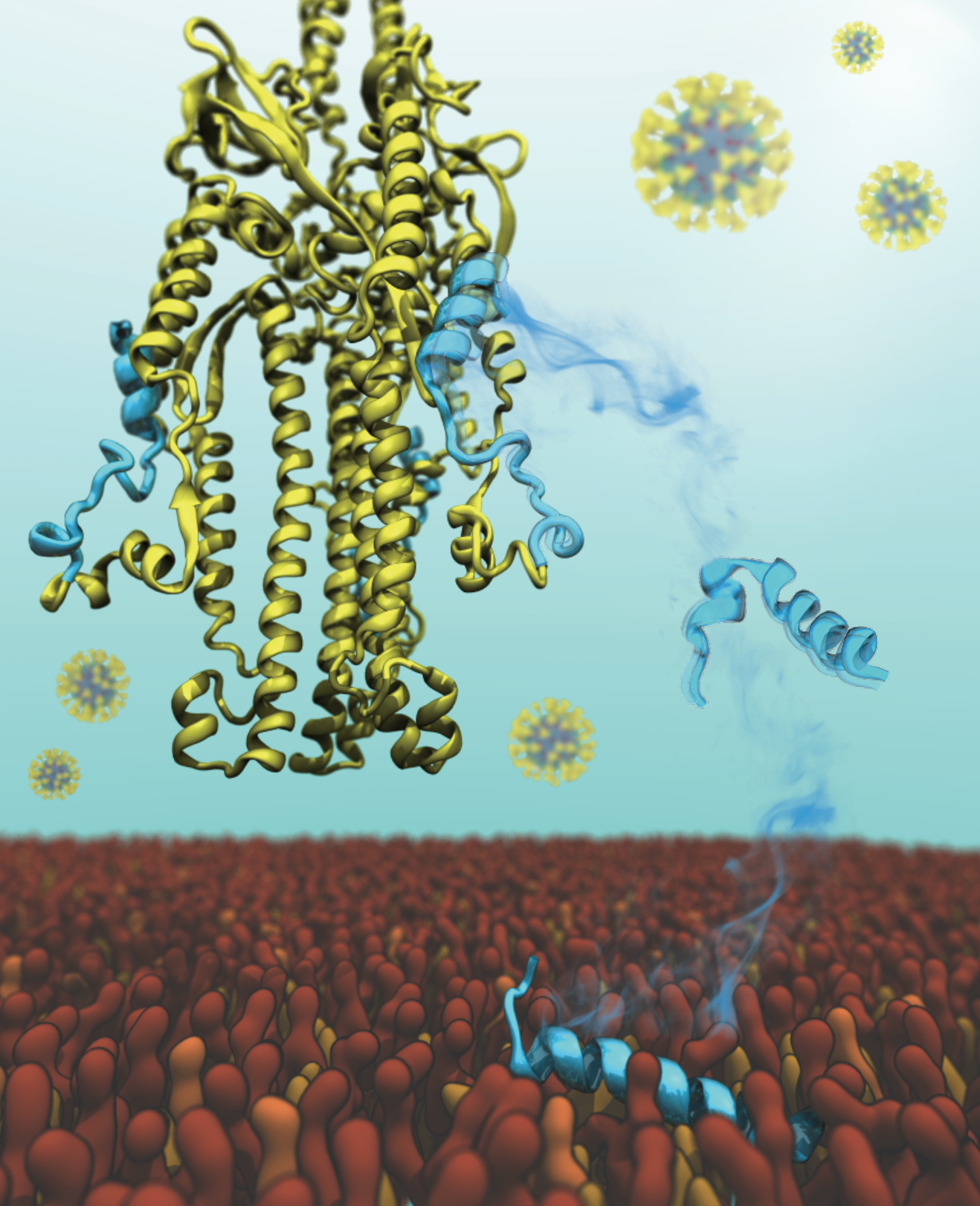In order to infect our cells, the virus that causes COVID-19, SARS-CoV-2, first attaches a molecule on our cell surface, but then it has to fuse with human cells. Before the pandemic, Gorgun was studying the interactions of molecules that stick to and insert into cell membranes, and when COVID-19 began to spread, Gorgun quickly pivoted her studies to understand how SARS-CoV-2 fused with cells.
A small region of the SARS-CoV-2 outer spike protein called the “fusion peptide,” inserts itself into the human cell membrane to begin the fusion process. Scientists knew the location and approximate shape of the fusion peptide; however, they did not know exactly how it interacted with and penetrated into the human cell membrane and whether there would be changes in its shape when it stuck to the membrane. Without knowing the three-dimensional interactions between the SARS-CoV-2 fusion peptide and the cell membrane, it is not possible to design drugs that specifically disrupt that interaction.
Using computer simulations, the team merged what is known about the SARS-CoV-2 fusion peptide with the established three-dimensional structures and behaviors of other coronavirus fusion peptides and simulated its interaction with a model human cell membrane. Their simulations reveal how the SARS-CoV-2 fusion peptide interacts with, and penetrates, the cell membrane. “Our study shows which parts of the fusion peptide are important and how it sticks to and sits in the membrane,” Gorgun says.
Because their model is theoretical, the next step is to repeat their computer experiments in the lab with pieces of SARS-CoV-2 and cell membranes. But having already revealed parts of the fusion peptide that are likely to be critical to its function, those experiments will likely be completed faster and more efficiently. After that, Gorgun says, it will be possible to start testing drugs that disrupt the interaction and could help block SARS-CoV-2 from docking at our cells.



